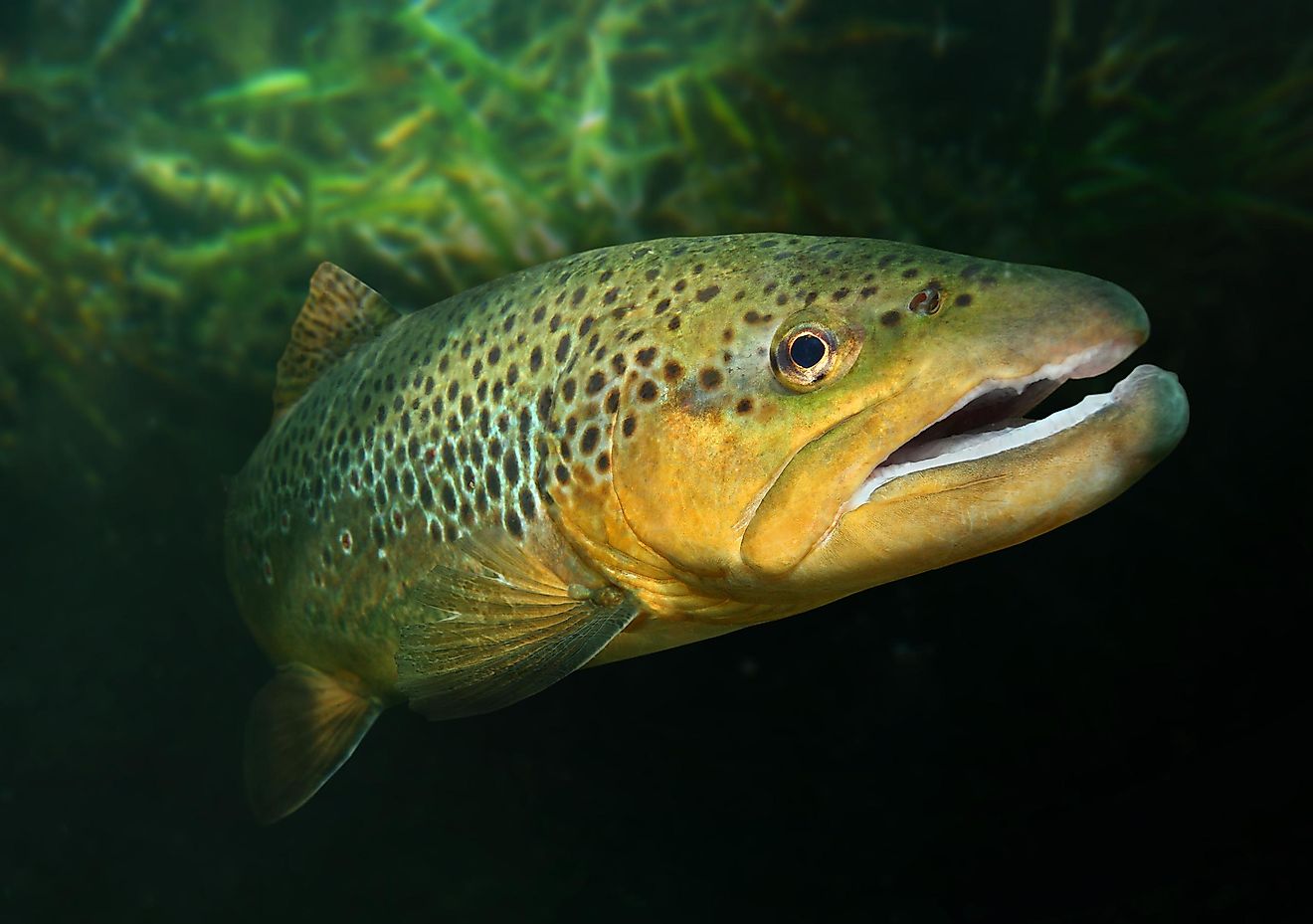Native Fish Species Of Mongolia

The country of Mongolia is located in East Asia and is bordered by both China and Russia. Mongolia is a landlocked country that is more known for its rugged steppe terrain and the Gobi Desert then it is for its lakes and native fish species. However, this article will discuss the native fish that call Mongolia home and mention their physical characteristics, habitat and current conservation status.
The native fish species of Mongolia:
Amur Pike
The Amur Pike, scientific name Esox reichertii, is a species of pike that is a member of the Esocidae family of freshwater fish. An adult of the species can grow to be up to 45 inches in length and weight up to 27 pounds. The species has a silver colored body that has small, black spots on it. This species is native to the Amur River system that runs through China, Russia and Mongolia and can only be found there. The Amur Pike has yet to be assessed by the International Union for Conservation of Nature (IUCN) Red List, so it is unknown what its current status is, if it faces any major threats and what its population trend is.
Brown Trout
The Brown Trout, scientific name Salmo trutta, is a species of fish that is a salmon and a member of the family Salmonidae family of ray-finned fish that includes trout, salmon, chars, graylings and whitefish. Adults of this species can grow to be up to 39 inches in length and weight 44 pounds depending on where they live. This species can range in color from being mostly silver with a white belly to being a brassy brown color that fades into a creamy white at the belly. This species habitat is found in cold streams, rivers, lakes and also in lake outlets. This species is native to most of the countries in Europe, but has since been introduced to throughout the rest of Europe, North America, Central America, New Zealand, Australia, southern and eastern Africa, Japan, Mongolia, India, Pakistan and Nepal. According to the ICUN Red List, the Brown Trout is currently classified as a species of least concern since 2008 and its current population trend is unknown. The major threats that this species faces are from being locally threatened in certain locations from water pollution and from the impacts that salmon farming can have, like sea lice.
Hovsgol Grayling
The Hovsgol Grayling, scientific name Thymallus nigrescens, is a species of grayling that is a member of the Salmonidae family of ray-finned fish. An adult of this species usually grow to be between 6.69 to 7.78 inches (17 to 20 centimeters) in length. This species has a silvery colored body with blue colored upper and lower fins. This species is endemic to Mongolia and is only found in Lake Khuvsgul, also known as Lake Hovsgol. The Hovsgol Grayling has yet to be assessed by the IUCN Red List, so it is unknown what its current status is and what its population trend is. It is known that the species faces pressures from climate change, water pollution, illegal fishing and increased development in the area.
Sharp-Snouted Lenok
The sharp-snouted lenok, scientific name Brachymystax leno, is a species of fish that is a salmon and a member of the family Salmonidae family of ray-finned fish. Adults of this species grow to be around 28 inches (70 centimeters) in length. This species is a light reddish color with a black colored top side and some black striping on its sides. This species inhabits the deep cold waters of rivers and can be found under ice during the winter time. This species is found in the central and eastern parts of Russia, northeastern Kazakhstan, northern Mongolia as well as in northeastern China. The sharp-snouted lenok has yet to be assessed by the IUCN Red List, so it is unknown what its current status is and what its population trend is. It is known that the species has declined in certain areas due to pollution and over-exploitation.
Taimen
The Taimen, scientific name Hucho taimen, is a species of fish that is a Salmonidae family. Adults of this species usually grow to be around 28 to 47 inches in length and between 33 to 66 pounds. This species usually has an olive green colored head that blends into a reddish brown color at its tail. This species is only found in freshwater and is usually found in rivers and streams that have swift currents, although they have also been found along coastal rivers and at altitudes above 4,921 feet. This species is native to the countries of Kazakhstan, Russia, Mongolia and China. According to the ICUN Red List, the Taimen has been listed as a vulnerable species overall since 2012, but has been listed as being endangered in Mongolia as its population has decline by 50% since the 1980s. This species face many major threats, including pollution, illegal fishing, climate change, recreational fishing, road construction, damming of rivers, mining and sedimentation and erosion.
What is being done to help the native fish species of Mongolia:
There are efforts that are being undertaken to help protect the native fish species of Mongolia. The government of Mongolia has established national parks and nature reserves, like the Lake Hovsgol National Park where the Hovsgol Graying can only be found. They have also put restrictions on gillnet fishing in certain areas to protected species from over-fishing. The government of Mongolia stills needs to put regulations on mining, as well as sand and gravel extraction, so that stream beds are protected.
Native Fish Species Of Mongolia
| Native Fish of Mongolia | Scientific Name |
|---|---|
| Taimen | Hucho taimen |
| Sharp-Snouted Lenok | Brachymystax leno |
| Brown Trout | Salmo trutta |
| Amur Pike | Esox reichertii |
| Hovsgol Grayling | Thymallus nigrescens |











